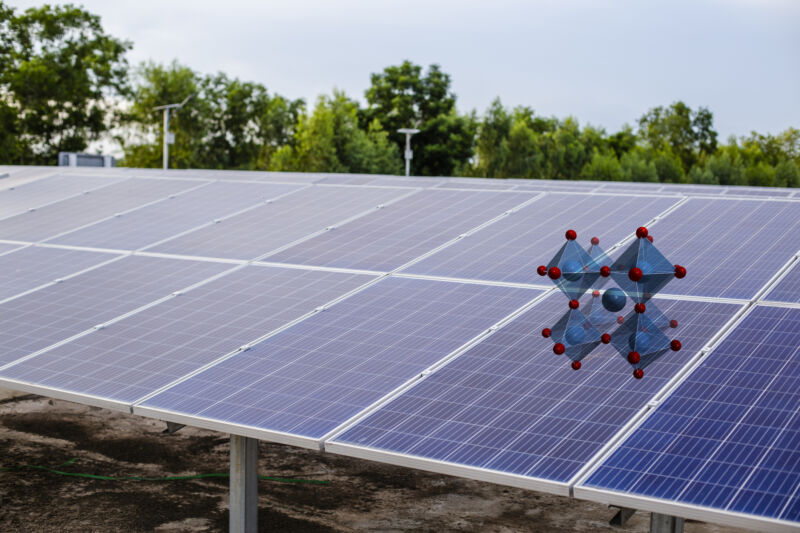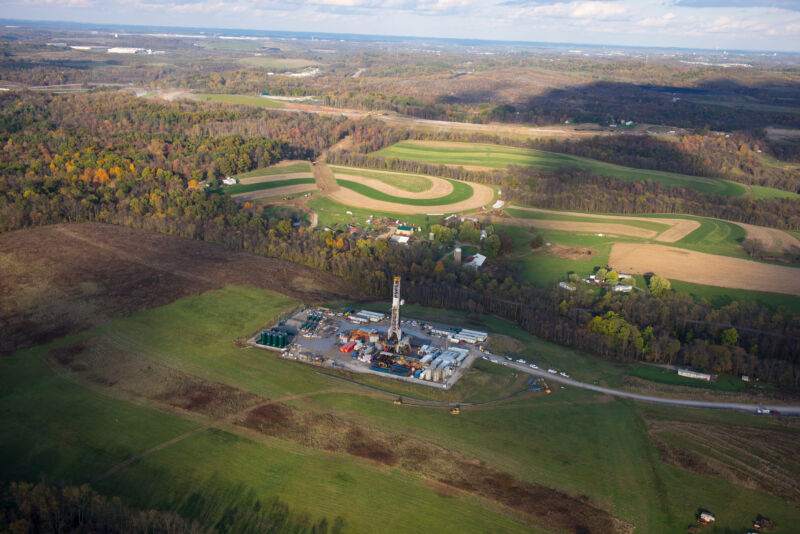Silicon plus perovskite solar reaches 34 percent efficiency

Enlarge / Some solar panels, along with a diagram of a perovskite's crystal structure. (credit: Subhakitnibhat Kewiko)
As the price of silicon panels has continued to come down, we've reached the point where they're a small and shrinking cost of building a solar farm. That means that it might be worth spending more to get a panel that converts more of the incoming sunlight to electricity, since it allows you to get more out of the price paid to get each panel installed. But silicon panels are already pushing up against physical limits on efficiency. Which means our best chance for a major boost in panel efficiency may be to combine silicon with an additional photovoltaic material.
Right now, most of the focus is on pairing silicon with a class of materials called perovskites. Perovskite crystals can be layered on top of silicon, creating a panel with two materials that absorb different areas of the spectrum—plus, perovskites can be made from relatively cheap raw materials. Unfortunately, it has been difficult to make perovskites that are both high-efficiency and last for the decades that the silicon portion will.
Lots of labs are attempting to change that, though. And two of them reported some progress this week, including a perovskite/silicon system that achieved 34 percent efficiency.

